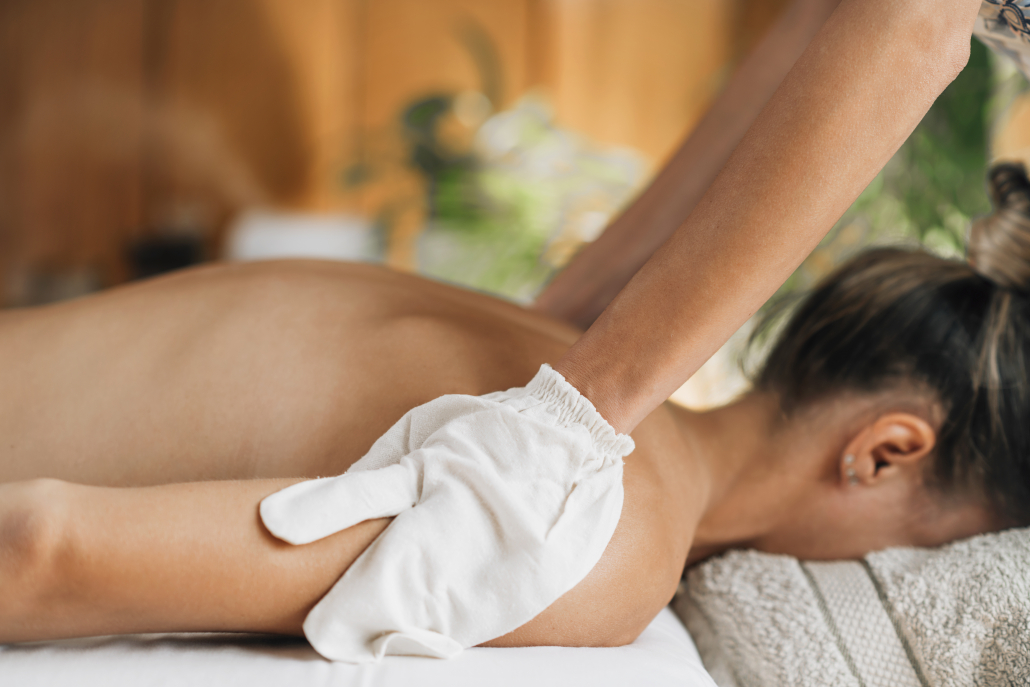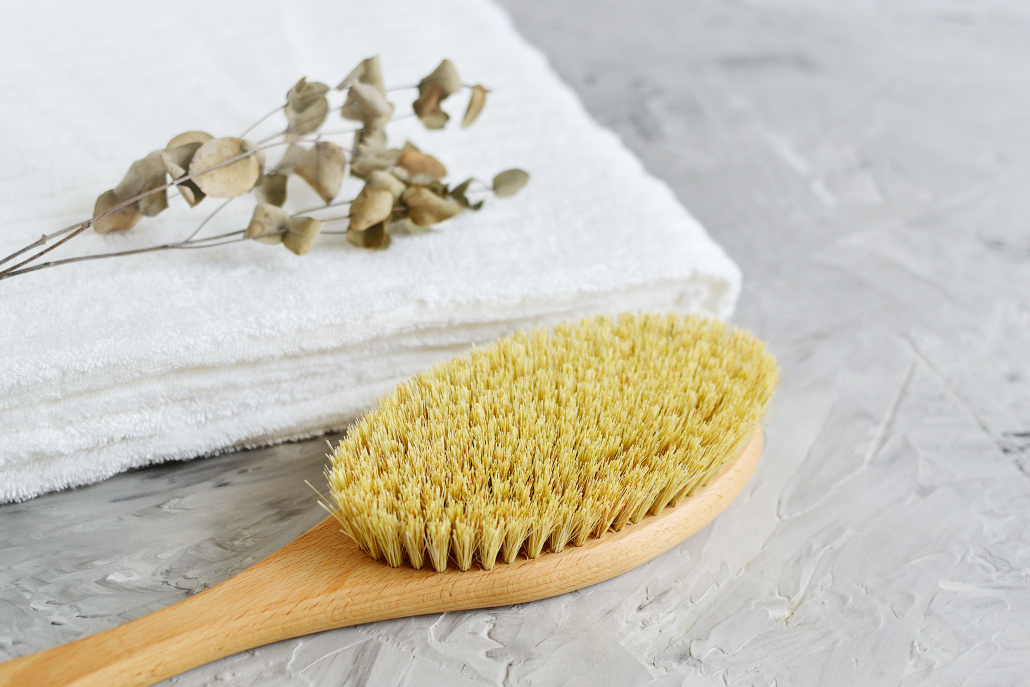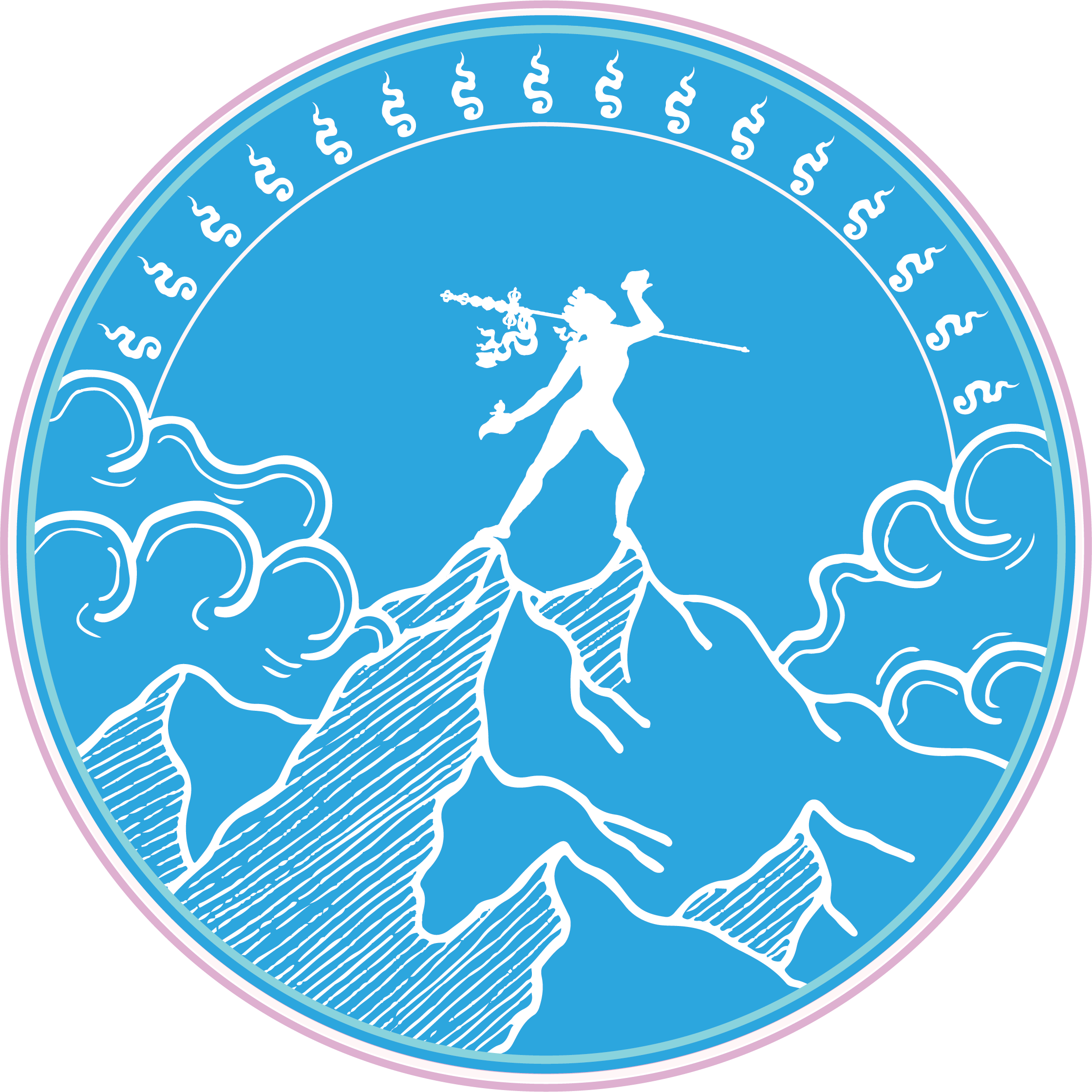Dry Skin Brushing – Garshana

WHAT IS IT?
Garshana, most commonly known as dry brushing, is an Ayurvedic practice of vigorous body massage with wool, raw silk, or cotton, which detoxifies the lymphatic system. This form of exfoliation creates static electricity in and around the body which increases heat, circulation, and waste removal through the skin.
HISTORY
Ayurvedic massage has its roots in Siddha medicine, a system of medicine brought to South India by the great siddhar or sage Agastya. It has been told that Siddha medicine is the oldest system of medicine in the world, possibly up to 8,000 years old.
The Ancient Egyptians used dry brushing techniques using natural enzymes from sour milk and wine dating back thousands of years. Traditional Chinese dry brushing techniques involved the dried fibers of a gourd fruit called silk squash, also known as a loofah. The Ancient Greeks and Romans used strigils (a bronze instrument with a curved blade) with olive oil to remove dirt, sweat and oil before bathing. The Russians, Turks, and Scandinavians have also used dry brushing for centuries.
PRODUCTS
Raw silk, wool, terry gloves. Dry brushes. Other like copper.
BENEFITS
*Increases Circulation
*Detoxifies the lymphatic system
*Relaxes the mind
*Stimulates blood flow
*Combats cellulite
*Expels ama (toxins)
*Exfoliates the skin
*Improves energy
*Strengthens the immune system
*Stimulates the hormone and oil glands
CONDITIONS
*Headache
*Stiffness and muscle aches
*Neuralgia
*Fatigue
*Blood Circulation
*Gastrointestinal function
RISKS / CONTRAINDICATIOS
*If you have sensitive skin or conditions of the skin such as eczema, psoriasis, sunburn or open wounds, avoid dry brushing over these areas.
STEP-BY-STEP
It is best to brush towards the heart to increase lymphatic flow.
- Wearing your garshana gloves, start at the feet, massaging the feet and legs using long strokes upwards towards the heart, incorporating circular motions at the ankles and knees.
- Massage the abdominal area in a clockwise direction (the same direction as digestion).
- The low back, buttocks and hip joints can also be massaged in a clockwise direction.
- Massage the arms using long strokes from the hands to the shoulders, incorporating circular motions at the wrists and elbows.
- Continue to the neck and shoulders using long brush strokes, using circular motions around the chest.
- Continue to the top of the head using small, circular motions.
- Finally, lightly massage the face, using small, circular motions from the center outward. Make sure to incorporate the ears, massaging them in circular motions.
VPK: *Raw silk gloves are recommended for Vata and Pitta types; wool gloves for kapha.
Strength: light pressure on areas of the body where the skin is thinner, harder pressure on thicker areas such as the soles of the feet.
Duration: 10-15 minutes
Frequency: daily for Kapha doshas, 3-5 times per week for Pitta doshas, 1-2 times per week for Vata doshas
Time of Day: First thing in the morning, before bathing, or before Ayurvedic massage
Glove/brush Care: Most silk/wool gloves may be machine washed and dried.

REFERENCES
Douillard, Dr. John. The Encyclopedia of Ayurvedic Massage. North Atlantic Books, 2004.
Dry Brushing: Benefits, Risks, and More (healthline.com)
Dry Brushing Technique – Natural Health Techniques
Garshana – Ayurvedic Dry Brushing | PAAVANI Ayurveda – Paavani Ayurveda
